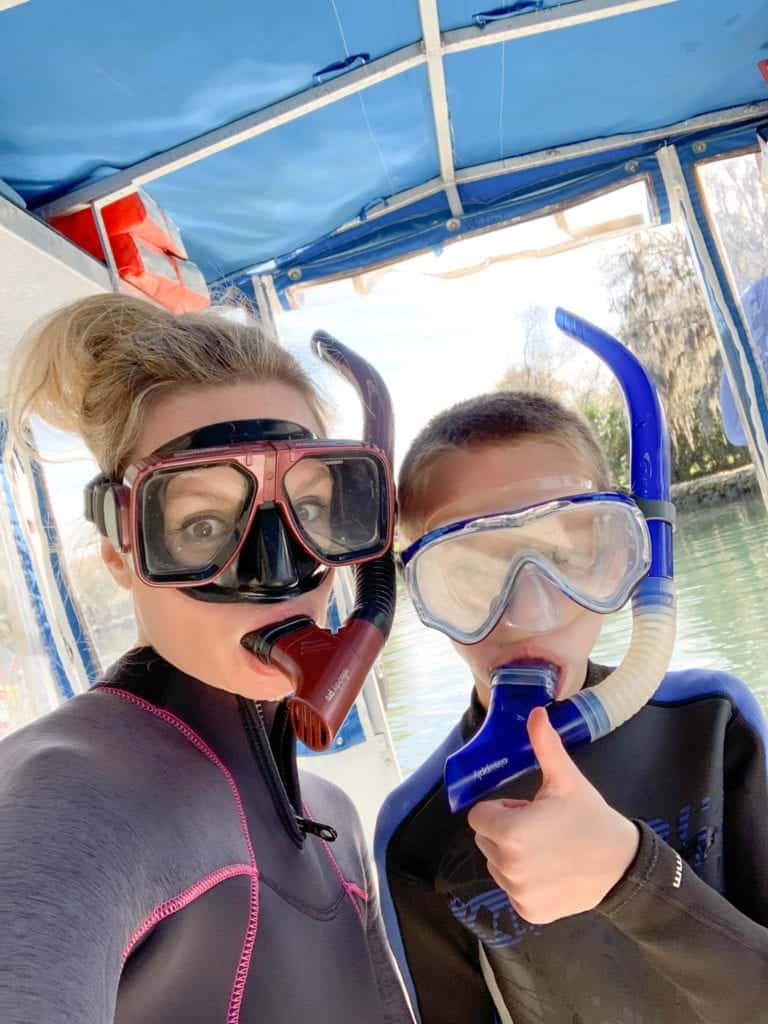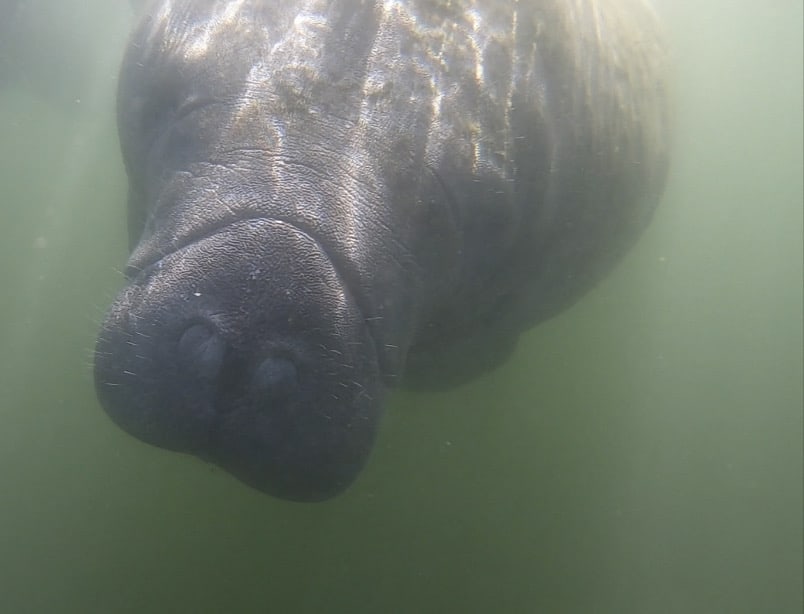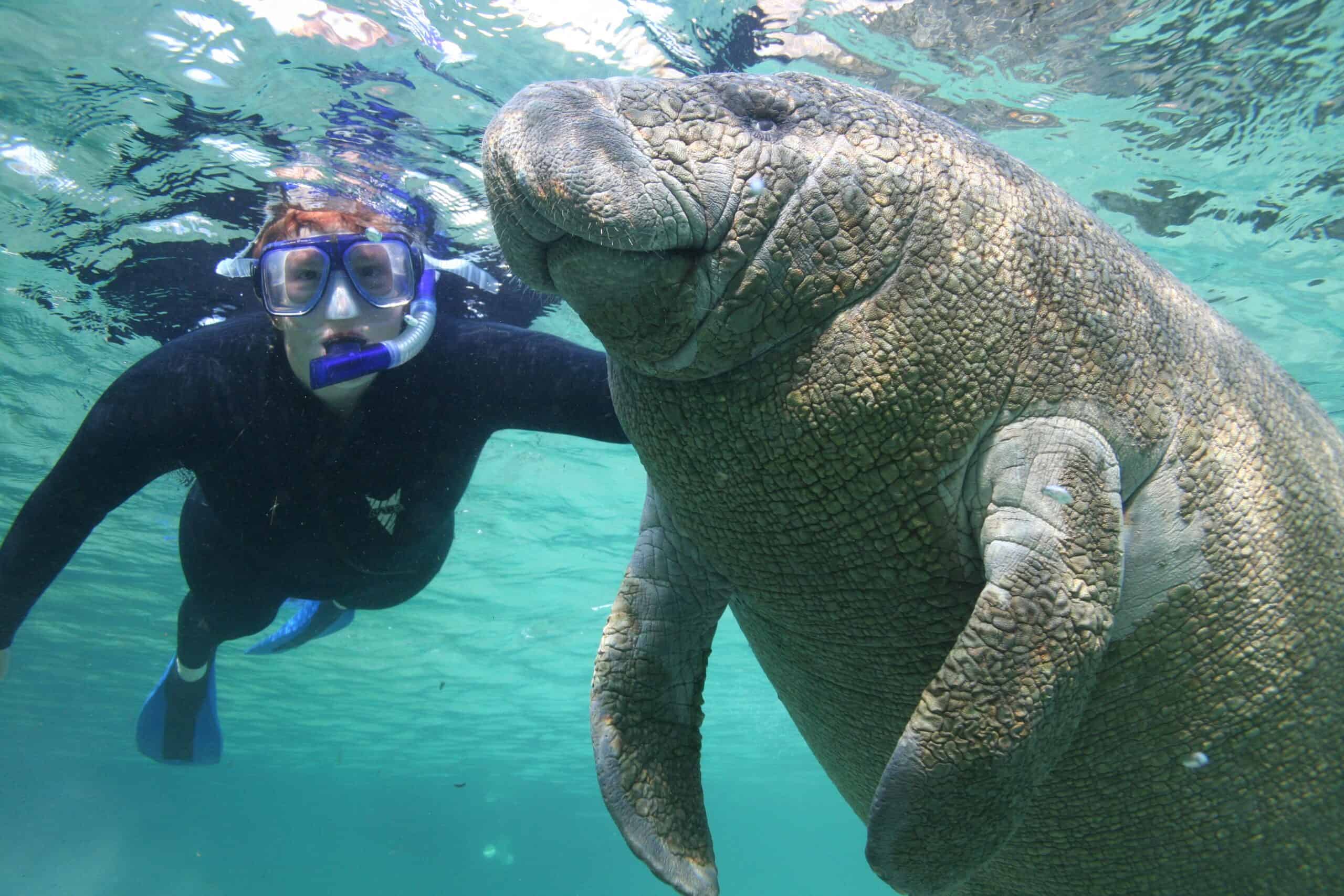Tampa Bay Bucket List: Swimming with Manatees in Crystal River
2020 really shifted my perspective as a parent. It also shifted my perspective as a Floridian and gave me a whole new appreciation for this area we call home since we started to focus more on all of the outdoor experiences in our area.
And one came right from our Bucket List, swimming with manatees. My oldest son and I embarked on this once-in-a-lifetime outdoor adventure you can only do right here close to home, just north of Tampa Bay.
The cooler months are the best time to go when you are more likely to spot a manatee as they seek the warmer waters of the springs. November 15th-March 31st is considered ‘manatee season' in the Crystal River and Homosassa Springs area.
What to know before you go swimming with manatees
Crystal River and Homosassa are the only areas in North America where you can legally swim with and passively observe manatees in their natural habitat. However, since manatees are protected by federal and state law, it’s a good idea to review the rules with your kids before you go. (see the next section)
This is also why it’s a good idea to book a tour with a reputable company like the Adventure Center at Plantation on Crystal River because your guide and captain are experts when it comes to these rules.
They also provide you with a towel, mask, snorkel and sanitized wet suit, which you will absolutely want since their 5 mm wetsuit helps keep you warm and buoyant. Added bonus, they bring a GoPro so you don’t have to worry about snapping photos.
We recommend booking the first tour of the morning since it's cooler, but it's also less crowded on the water. We were shocked at how busy it got as we were leaving to head back.

The rules about swimming with manatees
To ensure everyone is on the same page when it comes to the rules, your two-hour tour will begin with an 8-mintue video produced by Florida Fish and Wildlife going over the do’s and don’ts, including:
- Do not chase or pursue a manatee
- Do not touch or dive onto a resting, feeding or nursing manatee
- Do not corner or surround a manatee
- Do not ride, pinch, grab or hold a manatee
- Do not poke, prod or stab a manatee with anything including your hands and feet
- Do not stand or step on a manatee
- Do not feed or give a manatee water
- Do not separate a manatee from its herd or calf from its mother
The earlier in the morning you can book your tour and the colder the day, the better. Private and semi-private tours start as early as 6 a.m. Our tour started at about 10:30 a.m., which meant there were kayakers and other tours on the water, but our guide Courtney and Captain Mike did a great job of finding us secluded spots for the magic that was about to happen!
We were reminded to quietly enter the water to avoid splashing, which could scare the manatees. Our guide asked us to use our ninja skills to quietly move through the water with our arms and hands and to avoid kicking with our feet. The buoyant wet suits definitely help take the pressure off trying to stay afloat while swimming. My son swam with a pool noodle.
Be patient; it doesn’t take long before you encounter your first manatee.
What it's like to swim with manatees
We were simply floating in Kings Bay with our guide when we were suddenly face to face with a curious manatee! She did a little belly roll for us before she moved on about her day. You are not allowed to touch a manatee unless they initiate contact and even then, it’s with one hand only and only on their back or belly. A two-hand touch is illegal.

We saw a few other manatees too near Three Sisters Springs–following the rules, we didn’t approach them, but it was pretty neat to observe them in their natural habitat grazing on their greens.
Our guide shared some fun facts like how much manatees eat—the herbivores eat up to 10% of their body weight in sea grass, algae and mangrove leaves. Weighing in at up to 1,200 pounds…that’s a lot of greens! We even watched a manatee swim up to our pontoon boat to nibble on the algae on the side of the boat as we sipped our complimentary hot chocolate. Snack time for everyone!
One question we got from friends was, was it cold? The air was cold—it was in the lower 50s that morning, but the water is natural spring water which stays steady at about 72 degrees.
The cozy water temperature is why manatees love to migrate here when it gets cold. In fact, as many as 600 manatees head toward Crystal River and Homosassa between November and March which is why this timeframe is considered “manatee season!” Manatee tours are offered year-round here.
We also learned a few other facts about manatees from our guide while on the tour like:
- Manatees are closely related to elephants.
- They surface for air every 3-5 minutes but can hold their breath for as long as 20 minutes.
- Manatees have no natural predators.
Even though manatees have no natural predators, humans are among their greatest threats. This is why if you’re a boater, you should always look out for manatees, avoid shallow areas and sea grass beds and reduce your speed.
The manatee we saw nibbling the algae on our pontoon boat had what looked like healed boat propeller injuries on her back. It’s experiences like this that remind us we need do what we can to protect these gentle giants and the waterways they call home.
Paul Cross, the director of operations at Plantation on Crystal River said it best: “One thing I think we do best is educate our future. We love doing school groups and family adventures. If we can teach them– they are the next president; they are the next lawmakers and that’s crucial to protecting what we have.”
Swimming with the manatees was a bucket list item for us and I’m so glad I experienced it with my son. It was truly an unforgettable experience.
Related stories we think you’ll LOVE:
- Outdoor Adventures to Try with the Kids in Tampa Bay: 8 Ideas from the Outdoorsy Diva
- INSIDE LOOK: New in-water stingray encounter at ZooTampa's Stingray Shores
- Walk underwater among sharks with SeaTREK at The Florida Aquarium
- Scalloping in Tampa Bay: A Must Do Family Adventure
- Tampa Bay Springs You Need to Explore with the Kids
*Story originally written in January 2021; updated in 2024.


